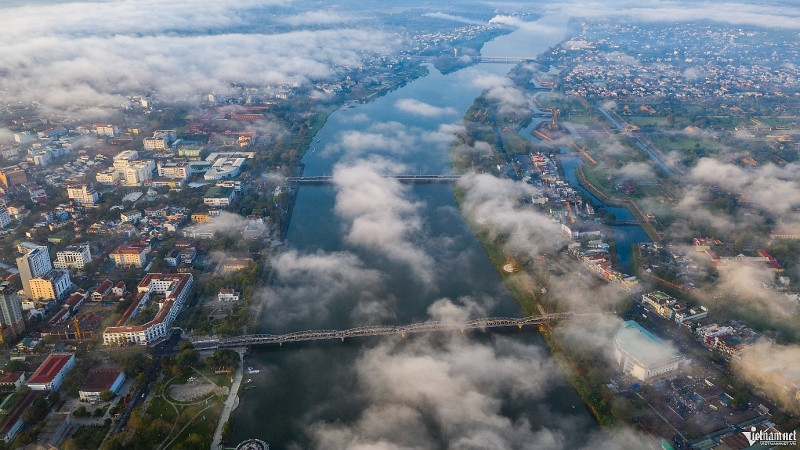


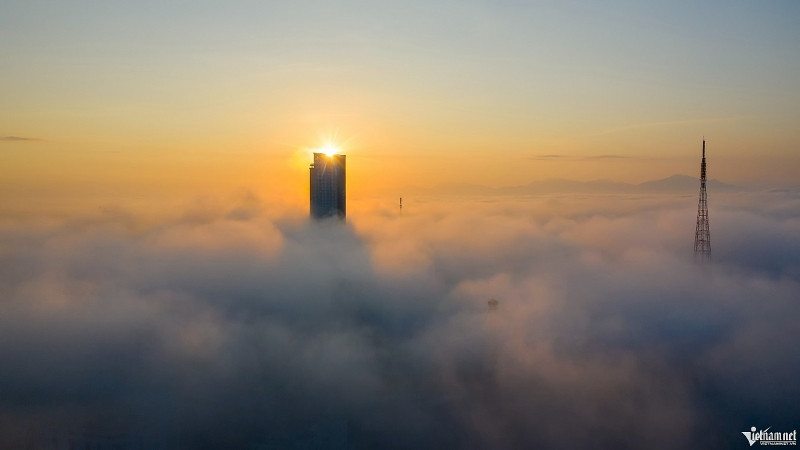
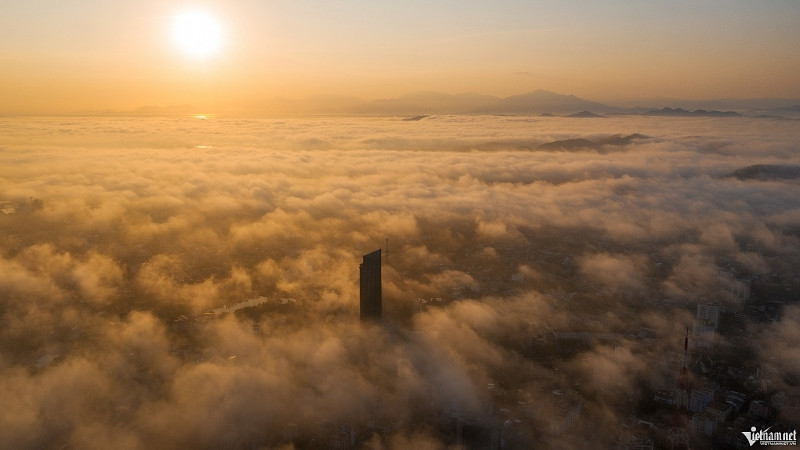
The place has mountains and plains, where rivers, lagoons and sea meet. With Tam Giang - Cau Hai lagoon system, Huong river, Ngu mountain, Bach Ma National Park, and Phong Dien nature reserve, Hue is the land of symbiosis and convergence.

Hue flag tower is a part of Hue Monuments Complex. Located in front of the Noon Gate, Hue flag tower was constructed under the reign of Emperor Gia Long in 1807. The structure was later renovated in 1829, 1831 and 1840. The tower consists of three flat-top pyramids. Each is placed on top of the other in a descending order. As its name suggests, the flag tower was where the national flag under Nguyen dynasty was hung.
In 1846, Emperor Thieu Tri ordered the new flagpole to be built. In 1904, the flagpole collapsed due to severe typhoon. Under Emperor Thanh Thai's reign, it was replaced by a cast iron flagpole. In early 1947, the flagpole again collapsed in the resistance against the French colonialists. In 1948, the Contemporary Council of Central Vietnam constructed the steel-core flagpole as we can observe today. From mid-1994 to 1995, Hue Monuments Conservation Center renovated the flag tower with total expense of over VND 1,5 billion. The flag tower consists of two parts including the tower and the flag pole.
The Noon Gate and the flag tower witnessed national significant events in the history. On August 30 1945, thousands of locals observed the abdication ceremony of Emperor Bao Dai. The event marked the end of the absolute monarchy. On this occasion, the sword and seal were handed over to the representative of the independent Vietnam government headed by President Ho Chi Minh. Thousands of people looked at the flag tower where the symbol of independent Vietnam fluttered in the autumn breeze. In Spring 1968, Thua Thien Hue soldiers and people were proud of the red and yellow flag hung on the tower 26 days and nights. In Spring 1975, Thua Thien Hue province was liberated. For Hue locals, that historical moment will last forever.

In addition to the Huong (Perfume) River, the 30km long An Cuu River is also famous in Hue. The river has many other names such as Loi Nong, Phu Cam, Dai Giang.



Truong Tien is one of the first bridges built in Indochina according to Western design and construction technique. Under the reign of King Le Thanh Tong (1460 - 1497), there was a rattan bridge crossing Huong River. Later, the bridge was rebuilt with wood. In 1897, French Resident Superior in the Central Lavécque had the bridge rebuilt with steel according to the design of the famous French architect Gustave Eiffel, who designed many architectural works in the world such as Eiffel Tower (France), Statue of Liberty (U.S.A)... In 1899, the bridge construction was completed and named Thanh Thai (name of Nguyen Dynasty’s King at that time). The bridge was 401.1m long, 6.2m wide and included six steel girders in semicircle shape.
In 1904, a fierce storm damaged the bridge. In 1906, the bridge was repaired, and the bridge surface was changed to reinforced concrete. In 1907, when King Thanh Thai (1889 - 1907) was exiled to Reunion Island, the French Government had the bridge renamed Clemenceau (name of French Prime Minister during the First World War). In 1937, under the reign of King Bao Dai (1926 – 1945), the bridge was extended for corridors for bicycles and pedestrians. In the resistance war against the French Colonialists and the American Empire, the bridge was destroyed many times and remodeled. After the Southern Liberation and National Reunification (30 April 1975), the bridge was renamed Trang Tien. Until 1991, Trang Tien Bridge was renovated, the balconies on the two sides of the bridge corridors were dismantled, and the bridge heart was narrowed to 5.4 m to add banisters. In 2004, the bridge was once again renamed Truong Tien.
Through many ups and downs for a few centuries, especially over the past 100 years, Truong Tien Bridge has become a part of the ancient capital land. Although there are many other bridges crossing Huong River, such as Bach Ho, Phu Xuan, Bai Dau… Truong Tien Bridge is still the most typical and a symbol of the romantic city of Hue. For the Hue Festival 2002, a modern lighting system was installed to appear bright and fanciful every evening.
Truong Tien Bridge is one of the first bridges built in Indochina in the late 19th and early 20th centuries according to Western new techniques and materials with steel structure. Before that, the bridges built were all made of bamboo and wood materials... and were not sustainable. The people of Hue are familiar with the saying "Truong Tien Bridge has six spans and twelve spans...", but the bridge has six spans and 12 spans linked together into six pairs. The bridge has a length of about 400m from the two abutments, and if including the path, the length of Truong Tien is about 453m, the width 6m. At the time of construction, the bridge did not have a sidewalk for pedestrians.
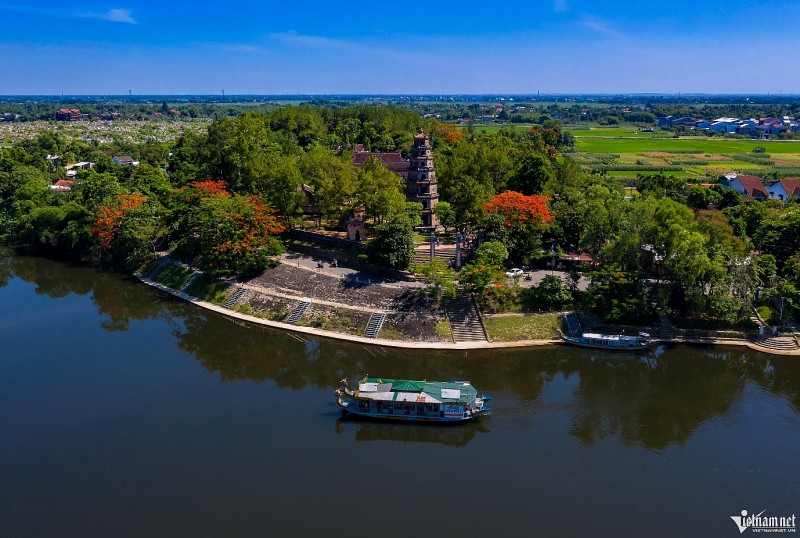
Hue is renowned for its Thien Mu pagoda. The architecture, location and history makes Thien Mu pagoda among the top attractions to see in Hue. The pagoda is located at the end of Kim Long Road, in Huong Long Ward, on the northern bank of the Perfume River.
As tourists approach the pagoda, what seizes their attention first is the seven-storey octagonal tower named Phuoc Duyen Tower (formerly Tu Nhan Tower). Built in mid-19th century by King Thieu Tri, the tower was to commemorate the 80th birthday anniversary of his grandmother. Passing the 3-door gate are 12 huge wooden sculptures of fearsome temple guardians and then in the middle of the area is where Dai Hung Palace, the main sanctuary of Thien Mu Pagoda, is located. Here, Buddha is worshipped with impressive sculptures and a giant bell, measuring 2.5m in height and 2 tons in weight, created in the early 18th century. Fragrant incense smoke fills the air there all day long, making the praying for blessings calm and peaceful.

Referring to the Perfume River of Hue, people often remember two sand dunes called Da Vien. If Hen islet is likened to "the dragon on the left", Da Vien islet is called "the white tiger on the right" to form an important feng shui element of the ancient Hue Citadel. According to historical and cultural documents, Da Vien dune is about 850m long, about 185m wide at its widest place, located to the southwest of Hue Citadel.

Hue has a small dreamy island named Hen. This place attracts visitors by the peace and tranquility of the creature, although after a long time there have been many changes.

Bao Vinh ancient town has a slow pace of life which, together with ancient houses with red-tile roof nestled by the poetic Huong River.
Until the 19th century, Bao Vinh ancient town was considered the epicenter of trade in the Dang Trong area. Many Chinese businessmen came to settle here, trading local goods like salt, rice, fish sauce, and seafood. To buy and sell goods, merchant ships arrived at this trading hub from Hong Kong, Macau, Japan and India, as well as from European countries.



About 6km from Hue city center, Chuon lagoon is an important lagoon system located in the North East of Phu An commune. It is the brackish water lagoon which is famous for its peace, vastness and specalities at reasonable prices. Chuon lagoon looks even more beautiful in early morning and late afternoon. It is filled with colorful clouds and small fishing boats.

Quang Loi lagoon, which is located about 30km North of Hue City, in Quang Loi Commune, Quang Dien District, is one of the lagoons in Tam Giang lagoon system, with an area of nearly 800 hectares. If you come here at dawn, you will have a chance to enjoy the brilliant beauty of Quang Loi lagoon. The immensity of the lagoon with vibrant colors, just like inlaid with gold, stretches out in front of visitors. The peaceful life of the fishermen here brings visitors a sense of peace and serenity.

About 10km from Hue city, Phu Mau commune (Phu Vang district) has long been known as the largest and most famous flower village in Thua Thien Hue province. For villagers, growing flowers is considered not only a livelihood but also a local fine tradition passed from generation to generation.



Phu Cam Cathedral is known as the cathedral of Hue Archdiocese. This work is located on a small hill called Phuoc Qua hill, located in Phuoc Vinh ward, Hue city, Thua Thien Hue province. Located on the south bank of the Perfume River, Phu Cam Church has a beautiful location, surrounded by a large space and by many other works of the Church making a beautiful whole. Phu Cam Cathedral is one of the biggest churches in the Hue city. It was built in a modern architectural style, designed by the architect Ngo Viet Thu. Unlike the ancient mausoleums, temples, or religious buildings in Hue, Phu Cam church has a modern architectural style.

Hue, the ancient citadel in Central Vietnam, has long been well-known for its historical constructions built under the reign of Nguyen Dynasty. Besides the Imperial City, there are various tombs of Nguyen’s King capturing the attention of both domestic and international visitors. Of all these works, Tomb of Tu Duc is an impressive destination that tourists should not miss when coming to Hue.
Tomb of Tu Duc is one of the seven appealing mausoleums on the outskirts of Hue imperial city. It lies in a wonderful pine valley of Duong Xuan Thuong Village (Thuong Ba Hamlet, Thuy Xuan Commune), about 8 km away from Hue city. Covering the area of 20 hectares, Tu Duc tomb consists of nearly 50 architectural works constructed in groups at different heights. Tu Duc tomb consists of two main parts located in two parallel axes.

Tomb of Thieu Tri started its construction in February 1848 under the supervision of Vu Van Giai, a mandarin of King Tu Duc. The tunnel for moving the coffin of King Thieu Tri into the grave was built on March 23rd 1848. On June 14th 1848, King Tu Duc looked over the construction for the last time. Ten days later, the coffin of King Thieu Tri was moved to the tomb.
It was not until November 1848 when the last construction was completed that the building process stopped. Since the tomb was built in haste, it took only 10 months in total to finish all the constructions. The structure and architecture of the Tomb of Thieu Tri is the combination of the two previous tombs: Tomb of Gia Long and Tomb of Minh Mang.

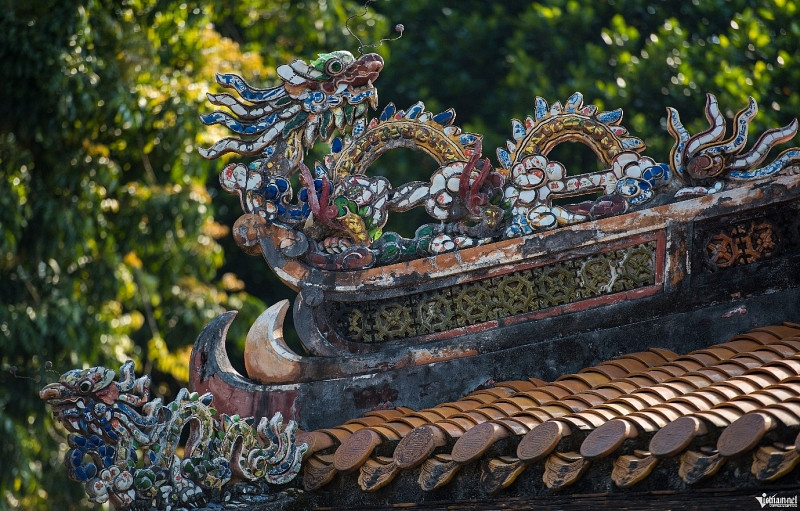

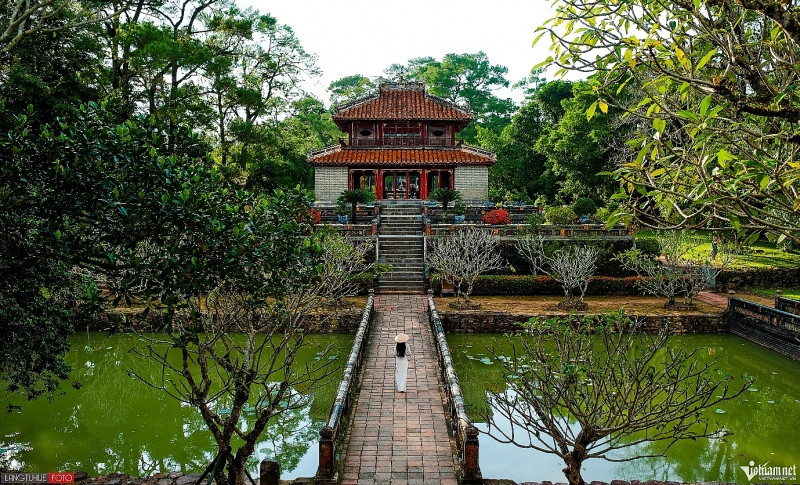


Minh Mang Tomb is in Huong Tho Commune, Huong Tra District, on the west bank of Perfume River and about 12km south of Hue City center. This place is where two tributaries join to form the picturesque Perfume River.
The tomb was constructed in 1840 under the order of King Minh Mang. After his death in 1841, King Thieu Tri continued the task, according to his father’s plan. The monument was finally completed two years later.
Touted as the most majestic of all Nguyen Dynasty royal tombs, Minh Mang Tomb is a complex of 40 constructions: palaces, temples, pavilions, etc. Many said that it’s a perfect combination of manmade and natural beauty of Hue, where architecture fits harmoniously into the surrounding landscape.

Being crowned in 1916, Khai Dinh is the twelfth emperor of the Nguyen dynasty. He was also the last emperor of the Nguyen dynasty to prepare himself a "home in another world". Khai Dinh tomb was constructed on Chau Chu mount (also called Chau E) about 10km from Hue city. Construction commenced on September 4th, 1920; it took 11 years to complete Khai Dinh tomb.
Some of the construction materials were bought from France (iron, steel, cement and Ardoise tile) and Japan (porcelain and glassware). Compared to other tombs in Hue, Khai Dinh tomb is smaller, yet more elaborate and time-consuming. It is the combination of East-West classic and modern architecture.
In general, Khai Dinh tomb is a rectangular construction with up to 127 steps. Mountains and streams around the tomb not only serve as Feng Shui elements but also create a majestic natural scenery.

Hien Nhon Gate is located on the east side of the Imperial Citadel, on Doan Thi Diem Street, Hue City. This gate was built in 1805 under King Gia Long. Under the reign of Minh Mang in 1833, the door was decorated with pieces of crockery. Under the time of Khai Dinh, this work was repaired again. Hien Nhon gate is reserved for mandarins and men entering and leaving the Imperial Citadel. Currently, this door is only used by Hue Monument Conservation Center staff.
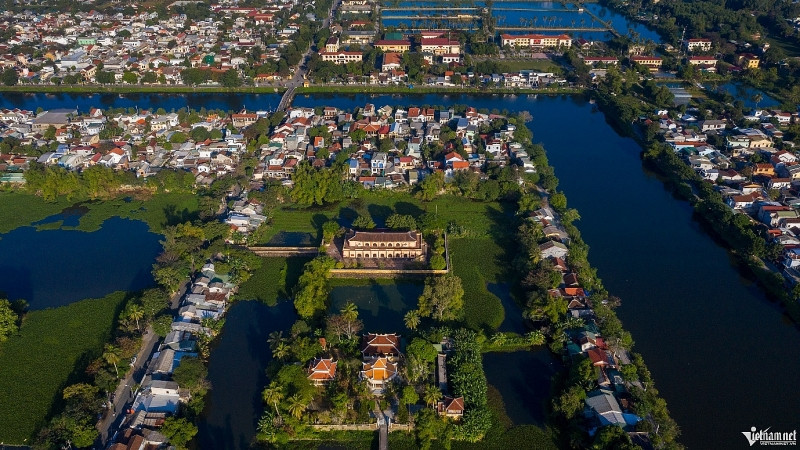
Tang Tho is one of the great libraries of the Nguyen Dynasty built in the summer of 1825, under King Minh Mang (1820 – 1840). It is located on a rectangular island (about 30m x 50m), in the middle of Hoc Hai lake. The island is connected to the mainland by a brick and stone bridge.
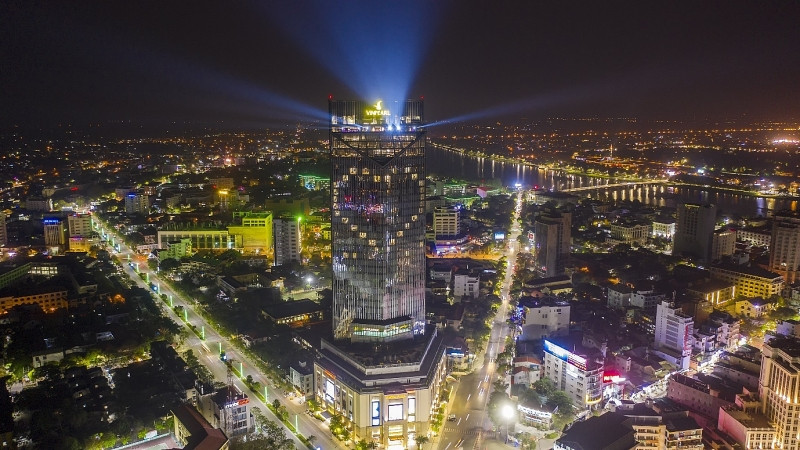
Le Huy Hoang Hai